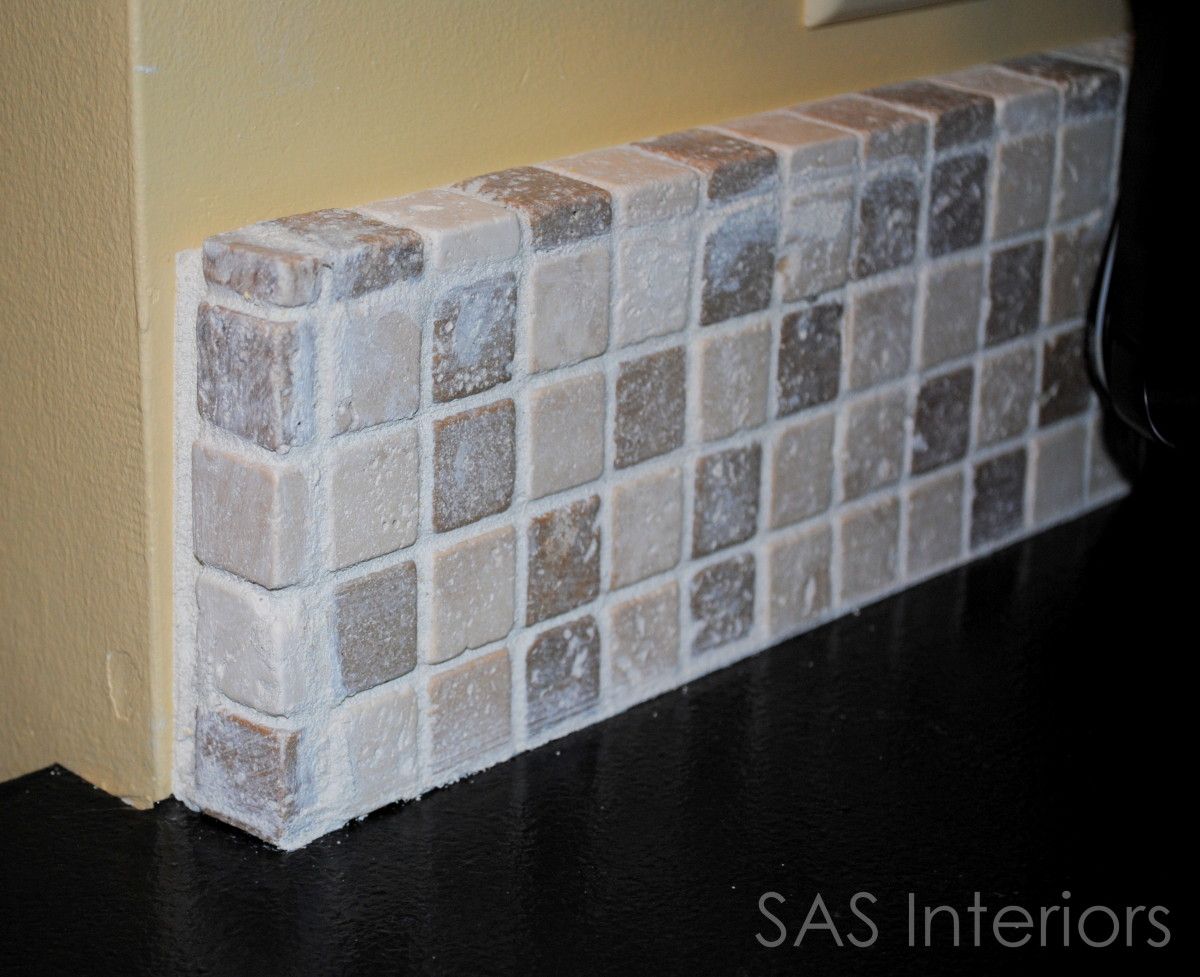Kitchen Makeover Phase Three: Tiling Over Laminate & Adding Cabinet Brackets
Countertops done – check!
Cabinets complete – check!
Now I’m on to the details…
I’m always attracted to a custom tiled backsplash versus the typical plain 4″ high backsplash that matches the countertop surface. Before embarking on the countertop transformation, my husband and I tried to remove the existing solid backsplash, but were unsuccessful. We moved forward with our makeover, but I still had it in my head to do something. hmmm…
Once the countertop was complete, I thought, ‘how about tiling right over the laminate to create a custom look on the backsplash?’…why not?
From my many tiling projects – powder room backsplash, fireplace surround, and kids bathroom – you know how I love to tile. Like paint, it truly changes and updates the overall look. The process of tiling this kitchen backsplash was the same as {THIS TUTORIAL}, but I’ll give a quick run-down anyway….
1. After measuring the backsplash height, I cut the tile to the appropriate size. I love using small tile because it usually has a mesh back and it’s easy to work with.
2. Apply the tile adhesive to the back surface. 
3. Spread the grout on the back surface and using a grooved trowl, spread it out so the adhesive covers the entire tiled area. You don’t want the surface to be overly covered with adhesive, but just enough so the tile can “grab” to the surface you want to cover.
4. Adhere the tile to the surface. Continue with the remainder of the area. Again, to see a more in depth tutorial, check out these two previous posts {here and here}.
5. Grout. My trick to grouting small areas, is to use a Ziploc bag. Cut off the tip and grout, just as you would if icing a cake.
This is a picture of me tiling my fireplace surround using my ‘trick of the trade’.
TIP: Another important bit of advice that I’ve found SO HELPFUL is to use painter’s tape to cover the areas you don’t want grout to touch. Grout is very gritty, and is sometimes difficult to get off a surface, especially when it hardens. It also gives you a nice, clean line once it’s removed.
Tiling is fairly easy! And fun (seriously)! I’ve said it once, and I’ll say it again…it truly is an inexpensive way to update a space. To tile this backsplash was less than $50 for materials.
 I wrapped the tile around the existing laminate surface to create a custom tile look.
I wrapped the tile around the existing laminate surface to create a custom tile look.
Doesn’t the tile change the entire look of the kitchen?
Adding Cabinet Brackets
Another detail that I added to the kitchen, are faux brackets underneath the upper cabinets. I’ve always loved the look of brackets and chose a profile that was fairly simple and in keeping with the modern sophistication I was trying to achieve for the kitchen.
The inspiration of the brackets came from Layla’s kitchen and it shows how adding details to a space, give it the true character and intrigue.
After painting them to match the cabinet color, they were ready to be hung.
These brackets are actually shelf brackets, and the hardware that they came with wasn’t going to work. After giving some thought on how to install them, I decided to use an instant glue. On second thought, I used this Epoxy Instant Mix that dries in 1 minute, giving me a few more seconds to make sure they were placed just right.
Apply a small amount to the back.
Then adhere to the wall. Use a level to make sure that it is plumb. It dries fast, so don’t move.
It worked perfectly and they are never coming down (even if I wanted them to)!
And here is how it looks now….
What do you think…what a change, right? Small details make the world of difference!
And if you don’t remember what the kitchen looked like before…here’s a peak ~
And here is how it’s looking now ~
I am sure you are tired of me saying this, but I’m still not ready to share the entire reveal. I have a few more projects to complete, then I’ll show you the results of the whole space! (I forgot to mention, we splurged on new appliances ~ SOOO excited).
I want to hear from you – What projects have you been working on this summer?














































